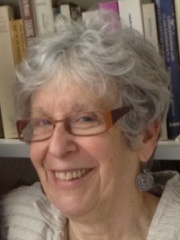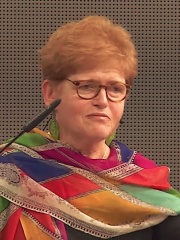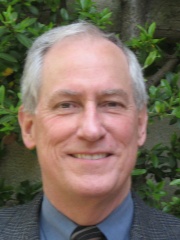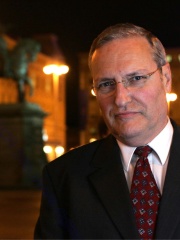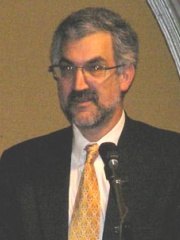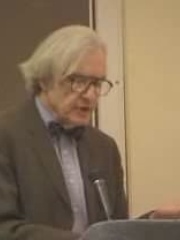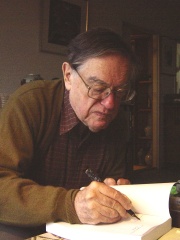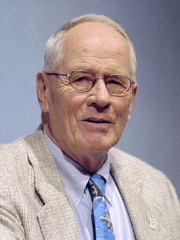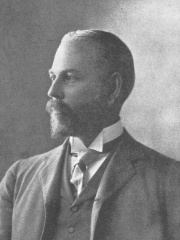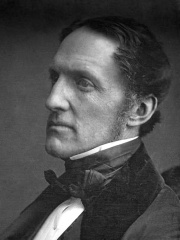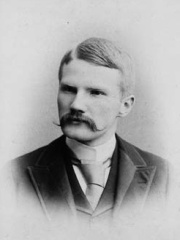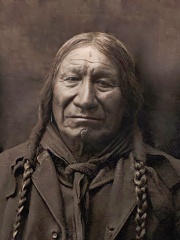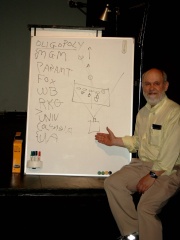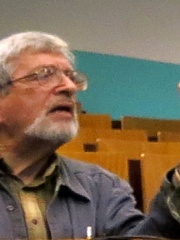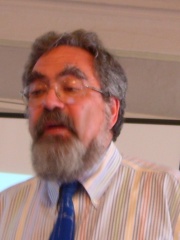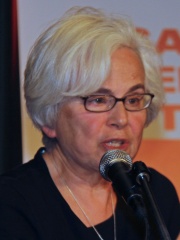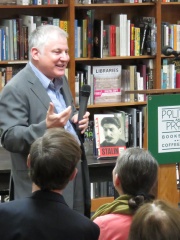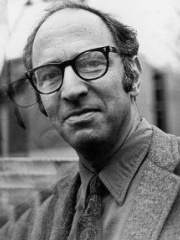
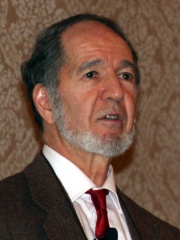


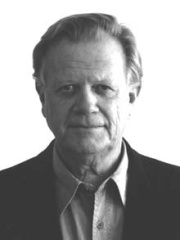
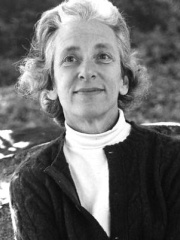
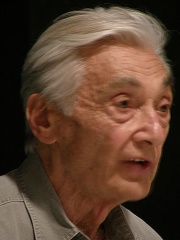
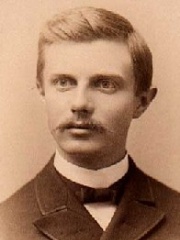
The Most Famous
HISTORIANS from United States
This page contains a list of the greatest American Historians. The pantheon dataset contains 561 Historians, 45 of which were born in United States. This makes United States the birth place of the 4th most number of Historians behind Germany, and France.
Top 10
The following people are considered by Pantheon to be the top 10 most legendary American Historians of all time. This list of famous American Historians is sorted by HPI (Historical Popularity Index), a metric that aggregates information on a biography’s online popularity. Visit the rankings page to view the entire list of American Historians.

1. Thomas Kuhn (1922 - 1996)
With an HPI of 71.71, Thomas Kuhn is the most famous American Historian. His biography has been translated into 67 different languages on wikipedia.
Thomas Samuel Kuhn (; July 18, 1922 – June 17, 1996) was an American historian and philosopher of science whose 1962 book The Structure of Scientific Revolutions was influential in both academic and popular circles, introducing the term paradigm shift, which has since become an English-language idiom. Kuhn made several claims concerning the progress of scientific knowledge: that scientific fields undergo periodic "paradigm shifts" rather than solely progressing in a linear and continuous way, and that these paradigm shifts open up new approaches to understanding what scientists would never have considered valid before; and that the notion of scientific truth, at any given moment, cannot be established solely by objective criteria but is defined by a consensus of a scientific community. Competing paradigms are frequently incommensurable; that is, they are competing and irreconcilable accounts of reality. Thus, our comprehension of science can never rely wholly upon "objectivity" alone. Science must account for subjective perspectives as well, since all objective conclusions are ultimately founded upon the subjective conditioning/worldview of its researchers and participants.

2. Jared Diamond (b. 1937)
With an HPI of 64.59, Jared Diamond is the 2nd most famous American Historian. His biography has been translated into 51 different languages.
Jared Mason Diamond (born September 10, 1937) is an American scientist, historian, and author. In 1985 he received a MacArthur Genius Grant, and he has written hundreds of scientific and popular articles and books. His best known is Guns, Germs, and Steel (1997), which received multiple awards including the 1998 Pulitzer Prize for general non-fiction. He has over 50 articles published in the scientific journal Nature, as well as a similar number in the popular magazine Discover. In 2005, Diamond was ranked ninth on a poll by Prospect and Foreign Policy of the world's top 100 public intellectuals.Originally trained in biochemistry and physiology, Diamond is commonly referred to as a polymath, stemming from his knowledge in many fields including anthropology, ecology, geography, and evolutionary biology. In 1999, he received the National Medal of Science, an honor bestowed by the President of the United States and the National Science Foundation. As of 2024, he is a professor of geography at UCLA.

3. Donna Haraway (b. 1944)
With an HPI of 61.53, Donna Haraway is the 3rd most famous American Historian. Her biography has been translated into 31 different languages.
Donna J. Haraway is an American professor emerita in the history of consciousness and feminist studies departments at the University of California, Santa Cruz, and a prominent scholar in the field of science and technology studies. She has also contributed to the intersection of information technology and feminist theory, and is a leading scholar in contemporary ecofeminism. Her work criticizes anthropocentrism, emphasizes the self-organizing powers of nonhuman processes, and explores dissonant relations between those processes and cultural practices, rethinking sources of ethics.Haraway has taught women's studies and the history of science at the University of Hawaii (1971-1974) and Johns Hopkins University (1974-1980). She began working as a professor at the University of California, Santa Cruz in 1980 where she became the first tenured professor in feminist theory in the United States. Haraway's works have contributed to the study of both human–machine and human–animal relations. Her work has sparked debate in primatology, philosophy, and developmental biology. Haraway participated in a collaborative exchange with the feminist theorist Lynn Randolph from 1990 to 1996. Their engagement with specific ideas relating to feminism, technoscience, political consciousness, and other social issues, formed the images and narrative of Haraway's book Modest_Witness for which she received the Society for Social Studies of Science's (4S) Ludwik Fleck Prize in 1999. She was also awarded the Section on Science, Knowledge and Technology's Robert K. Merton award in 1992 for her work Primate Visions: Gender, Race, and Nature in the World of Modern Science. In 2017, Haraway was awarded the Wilbur Cross Medal, one of the highest honors for alumni of Yale University.

4. Richard Sennett (b. 1943)
With an HPI of 58.20, Richard Sennett is the 4th most famous American Historian. His biography has been translated into 25 different languages.
Richard Sennett (born 1 January 1943) is the Centennial Professor of Sociology at the London School of Economics and former University Professor of the Humanities at New York University. He is currently a Senior Fellow of the Center on Capitalism and Society at Columbia University. Sennett has studied social ties in cities, and the effects of urban living on individuals in the modern world. He has been a Fellow of The Center for Advanced Study in the Behavioral Sciences, of the American Academy of Arts and Sciences, and of the Royal Society of Literature. He is the founding director of the New York Institute for the Humanities.
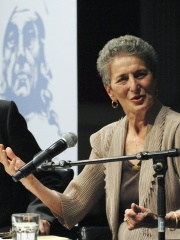
5. Natalie Zemon Davis (1928 - 2023)
With an HPI of 58.11, Natalie Zemon Davis is the 5th most famous American Historian. Her biography has been translated into 22 different languages.
Natalie Zemon Davis, (November 8, 1928 – October 21, 2023) was an American-Canadian historian of the early modern period. She was the Henry Charles Lea Professor of History at Princeton University. Her work originally focused on France, but it later broadened to include other parts of Europe, North America, and the Caribbean. For example, her book, Trickster Travels (2006), views Italy, Spain, Morocco and other parts of North Africa and West Africa through the lens of Leo Africanus's pioneering geography. (By 2023, the text had appeared in six translations.) Davis' books have all been translated into other languages: twenty-two for The Return of Martin Guerre. She was the second female president of the American Historical Association (the first, Nellie Neilson, was in 1943). Davis was awarded the Holberg International Memorial Prize and National Humanities Medal and was named Companion of the Order of Canada.

6. Hayden White (1928 - 2018)
With an HPI of 57.85, Hayden White is the 6th most famous American Historian. His biography has been translated into 31 different languages.
Hayden V. White (July 12, 1928 – March 5, 2018) was an American historian in the tradition of literary criticism, perhaps most famous for his work Metahistory: The Historical Imagination in Nineteenth-Century Europe (1973/2014).

7. Barbara W. Tuchman (1912 - 1989)
With an HPI of 56.10, Barbara W. Tuchman is the 7th most famous American Historian. Her biography has been translated into 41 different languages.
Barbara Wertheim Tuchman (; January 30, 1912 – February 6, 1989) was an American historian and author. She won the Pulitzer Prize twice, for The Guns of August (1962), a best-selling history of the prelude to and the first month of World War I, and Stilwell and the American Experience in China (1971), a biography of General Joseph Stilwell.Tuchman focused on writing popular history.

8. Howard Zinn (1922 - 2010)
With an HPI of 55.20, Howard Zinn is the 8th most famous American Historian. His biography has been translated into 44 different languages.
Howard Zinn (August 24, 1922 – January 27, 2010) was an American historian, playwright, philosopher, socialist intellectual and World War II veteran. He was chair of the history and social sciences department at Spelman College, and a political science professor at Boston University. Zinn wrote over 20 books, including his best-selling and influential A People's History of the United States in 1980. In 2007, he published a version of it for younger readers, A Young People's History of the United States.Zinn described himself as "something of an anarchist, something of a socialist. Maybe a democratic socialist." He wrote extensively about the civil rights movement, the anti-war movement and labor history of the United States. His memoir, You Can't Be Neutral on a Moving Train (Beacon Press, 1994), was also the title of a 2004 documentary about Zinn's life and work. Zinn died of a heart attack in 2010, at age 87.

9. Frederick Jackson Turner (1861 - 1932)
With an HPI of 54.32, Frederick Jackson Turner is the 9th most famous American Historian. His biography has been translated into 37 different languages.
Frederick Jackson Turner (November 14, 1861 – March 14, 1932) was an American historian during the early 20th century, based at the University of Wisconsin-Madison until 1910, and then Harvard University. He was known primarily for his frontier thesis. He trained many PhDs who went on to become well-known historians. He promoted interdisciplinary and quantitative methods, often with an emphasis on the Midwestern United States. Turner's essay "The Significance of the Frontier in American History" included ideas that formed the frontier thesis. In it, Turner argued that the moving western frontier exerted a strong influence on American democracy and the American character from the colonial era until 1890. He is also known for his theories of geographical sectionalism. During recent years historians and academics have argued frequently over Turner's work; however, all agree that the frontier thesis has had an enormous effect on historical scholarship.
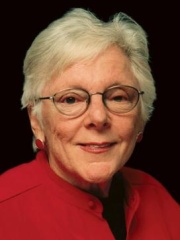
10. Linda Nochlin (1931 - 2017)
With an HPI of 54.05, Linda Nochlin is the 10th most famous American Historian. Her biography has been translated into 23 different languages.
Linda Nochlin (née Weinberg; January 30, 1931 – October 29, 2017) was an American art historian, Lila Acheson Wallace Professor Emerita of Modern Art at New York University Institute of Fine Arts, and writer. As a prominent feminist art historian, she became well known for her pioneering 1971 article "Why Have There Been No Great Women Artists?" published by ARTnews.
People
Pantheon has 54 people classified as American historians born between 1796 and 1969. Of these 54, 19 (35.19%) of them are still alive today. The most famous living American historians include Jared Diamond, Donna Haraway, and Richard Sennett. The most famous deceased American historians include Thomas Kuhn, Natalie Zemon Davis, and Hayden White. As of April 2024, 9 new American historians have been added to Pantheon including Ernest Fenollosa, Stanley G. Payne, and Charles Homer Haskins.
Living American Historians
Go to all RankingsJared Diamond
1937 - Present
HPI: 64.59
Donna Haraway
1944 - Present
HPI: 61.53
Richard Sennett
1943 - Present
HPI: 58.20
Joan Wallach Scott
1941 - Present
HPI: 51.06
Deborah Lipstadt
1947 - Present
HPI: 50.49
Timothy D. Snyder
1969 - Present
HPI: 50.20
Robert Darnton
1939 - Present
HPI: 49.63
Stanley G. Payne
1934 - Present
HPI: 49.54
Efraim Zuroff
1948 - Present
HPI: 49.22
Daniel Pipes
1949 - Present
HPI: 48.19
Robert Jay Lifton
1926 - Present
HPI: 47.31
Christopher Browning
1944 - Present
HPI: 46.04
Deceased American Historians
Go to all RankingsThomas Kuhn
1922 - 1996
HPI: 71.71
Natalie Zemon Davis
1928 - 2023
HPI: 58.11
Hayden White
1928 - 2018
HPI: 57.85
Barbara W. Tuchman
1912 - 1989
HPI: 56.10
Howard Zinn
1922 - 2010
HPI: 55.20
Frederick Jackson Turner
1861 - 1932
HPI: 54.32
Linda Nochlin
1931 - 2017
HPI: 54.05
Donald Keene
1922 - 2019
HPI: 50.47
Stephen E. Ambrose
1936 - 2002
HPI: 50.46
John King Fairbank
1907 - 1991
HPI: 50.15
Ernest Fenollosa
1853 - 1908
HPI: 49.93
William H. Prescott
1796 - 1859
HPI: 49.72
Newly Added American Historians (2024)
Go to all RankingsErnest Fenollosa
1853 - 1908
HPI: 49.93
Stanley G. Payne
1934 - Present
HPI: 49.54
Charles Homer Haskins
1870 - 1937
HPI: 46.27
American Horse
1840 - 1908
HPI: 45.58
David Bordwell
1947 - 2024
HPI: 43.49
Richard Taruskin
1945 - 2022
HPI: 42.35
Anthony Grafton
1950 - Present
HPI: 39.73
Ellen Meiksins Wood
1942 - 2016
HPI: 38.66
Stephen Kotkin
1959 - Present
HPI: 37.44
Overlapping Lives
Which Historians were alive at the same time? This visualization shows the lifespans of the 25 most globally memorable Historians since 1700.

